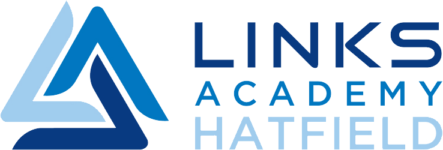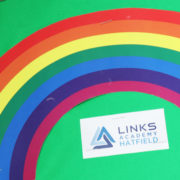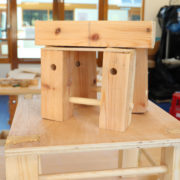Exam Board: AQA
Specification Number: 8300
What will be studied
The subject content of this specification matches that set out in the Department for Education’s Mathematics GCSE subject content and assessment objectives document. This content is common to all exam boards.
The content has been organised into broad topic areas and given a reference as follows:
Number
Students will study: The structure of the number system and calculations, including inverse operations, negative numbers, powers and roots. Working interchangeably between fractions, decimals and percentages. Use standard units of mass, length, time, money and other measures (including standard compound measures) using decimal quantities where appropriate. Round numbers to an appropriate degree of accuracy and use methods of estimation and approximation to check answers to calculations.
Algebra
Students will study: To use and interpret algebraic notation. Simplify and manipulate algebraic expressions and use formulae. Plot and interpret graphs of linear and quadratic functions. Plot and interpret graphs based on certain real-life situations and find approximate solutions to simple kinematic problems involving distance, speed and acceleration. Use inequality notation and solve equations and inequalities using algebraic methods (and graphical) for both linear and quadratic functions. Recognise and use different types of sequences and find rules for these.
Ratio, proportion and rates of change
Students will study: The use of ratio notation to represent the relationship between two or more variables, including the reduction of ratios to their simplest form. Apply ratio to real contexts and problems. Express a multiplicative relationship between two quantities as a ratio or a fraction. Interpret percentages and percentage changes as a fraction or a decimal, and interpret these multiplicatively. Solve problems involving direct and inverse proportion, including graphical and algebraic representations.
Geometry and measures
Students will study: The use of correct notation for describing 2D and 3D shapes and when solving geometrical problems. The application of angle facts and properties of shapes to solve problems. Use similarity and scale factors and the basic congruence criteria for triangles (SSS, SAS, ASA, RHS). Learn formulae and how to solve different problems involving Pythagoras’ Theorem and trigonometry. How different transformations modify position and size of shapes. Solve other geometrical problems involving formulae substitution and rearranging, including circles, spheres, cones etc. Use Vectors to describe translations and combine vectors.
Probability
Students will study: Use probabilistic ideas to describe different events and outcomes and calculate the chances of these happening, including the concepts of bias and fairness. Set up, record and interpret probability experiments in order to predict future or expected outcomes. Set up and interpret possibility spaces and Venn diagrams for different situations. Calculate the probability of independent and dependent combined events, including using tree diagrams and other representations, and know the underlying assumptions
Statistics
Students will study: How to infer properties of populations or distributions from a sample, whilst knowing the limitations of sampling. How to interpret and construct different tables, charts and diagrams including bar charts, pie charts and line graphs etc. Interpret, analyse and compare the distributions of data sets involving discrete, continuous and grouped data. Use appropriate measures of central tendency (median, mean, mode and modal class) and spread (range, including consideration of outliers).
Students will be taught from the foundation tier scheme of work, studying Grade 1 up to Grade 5 topics. Grade 4 and Grade 5 topics overlap both the higher and foundation tiers. There is the option for talented and motivated students to study Higher tier only Grade 6+ topics, and to sit the higher tier exam series.
In addition to a GCSE maths qualification, students at Links Academy will be offered the opportunity to gain a functional skills qualification in mathematics at either Level 1 or Level 2. These qualifications are comparable to a GCSE grade 1-3 and a GCSE grade 4-5 respectively, and are nationally recognised qualifications. The Level 2 functional skills mathematics is also accepted by universities as part of the entry requirements.
Learning Methods
Learning will be conducted within a classroom setting using a variety of teaching methods ranging from a traditional ‘chalk and talk’ style, to a more modern ‘interactive learning’. This will be facilitated by a range of activities including scaffolded worksheets, textbook exercises, pair and group learning, task-based problem-solving and educational games. There will be the opportunity for some lessons to be had outside of the classroom environment, and reward trips for hard-working students.
There are 20 units of work in the KS4 curriculum. 15 Units will be studied in Year 10, with the remaining 5 units in the autumn term of Year 11. The spring term and first half of the summer term in Year 11 will be devoted to revision and personalised learning in preparation for the final exams in May/June.
Each unit of work consists of a sequence of lessons, building on prior knowledge and developing links in students’ learning, followed by a lesson to revise the work learned in the unit, a formal 50 minute end of unit assessment, and finally a lesson to evaluate their assessment performance and decide on strengths (WWWs) and targets (EBWs).
| Year 10 | Year 11 | |
|---|---|---|
| Autumn term |
|
|
| Spring term |
|
Targeted Revision |
| Summer term |
|
Targeted Revision/Exams |
Expectations of Students
- Come to class ready to learn
- Engage in the lesson
- Try your best
How is the course assessed
GCSE Mathematics has a Foundation tier (grades 1 – 5) and a Higher tier (grades 4 – 9). Students must take three question papers at the same tier. All question papers must be taken in the same series.
This is a linear qualification. In order to achieve the award, students must complete all exams in November or May/June in a single year. All assessments must be taken in the same series. November entries will only be available to students who were at least 16 on the previous 31 August.
The information in the table below is the same for both Foundation and Higher tiers.
Paper 1: non-calculator
What’s assessed
Content from any part of the specification may be assessed
How it’s assessed
- written exam: 1 hour 30 minutes
- 80 marks
- non-calculator
- 33⅓% of the GCSE Mathematics assessment
Questions
A mix of question styles, from short, single-mark questions to multi-step problems. The mathematical demand increases as a student progresses through the paper.
Paper 2: calculator
What’s assessed
Content from any part of the specification may be assessed
How it’s assessed
- written exam: 1 hour 30 minutes
- 80 marks
- calculator allowed
- 33⅓% of the GCSE Mathematics assessment
Questions
A mix of question styles, from short, single-mark questions to multi-step problems. The mathematical demand increases as a student progresses through the paper.
Paper 3: calculator
What’s assessed
Content from any part of the specification may be assessed
How it’s assessed
- written exam: 1 hour 30 minutes
- 80 marks
- calculator allowed
- 33⅓% of the GCSE Mathematics assessment
Questions
A mix of question styles, from short, single-mark questions to multi-step problems. The mathematical demand increases as a student progresses through the paper.
What websites are recommended
www.bbc.co.uk/bitesize/subjects/z6vg9j6
What equipment is needed
- Course materials
- Writing equipment: pens, pencil, ruler, calculator, compasses and protractor
- Workbook
Career Paths/Next Steps
- A-levels
- Apprenticeships
- Further Education
- Accountancy careers
- Actuarial Science
- ICT careers
- Engineering
- Law






